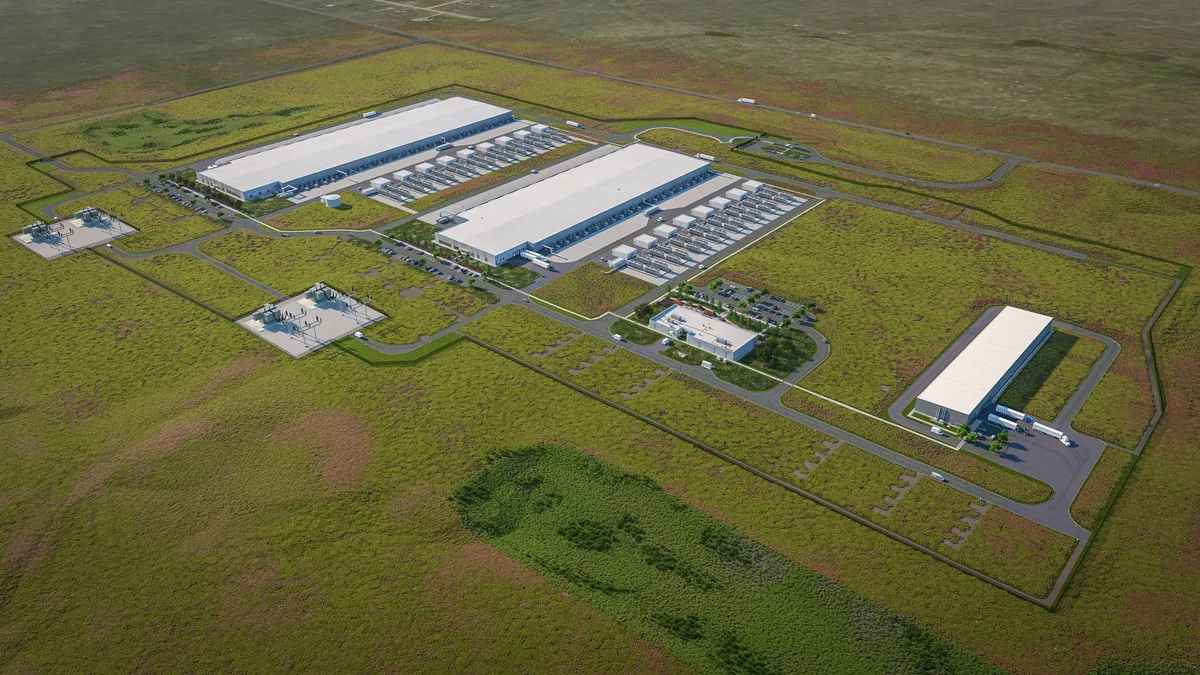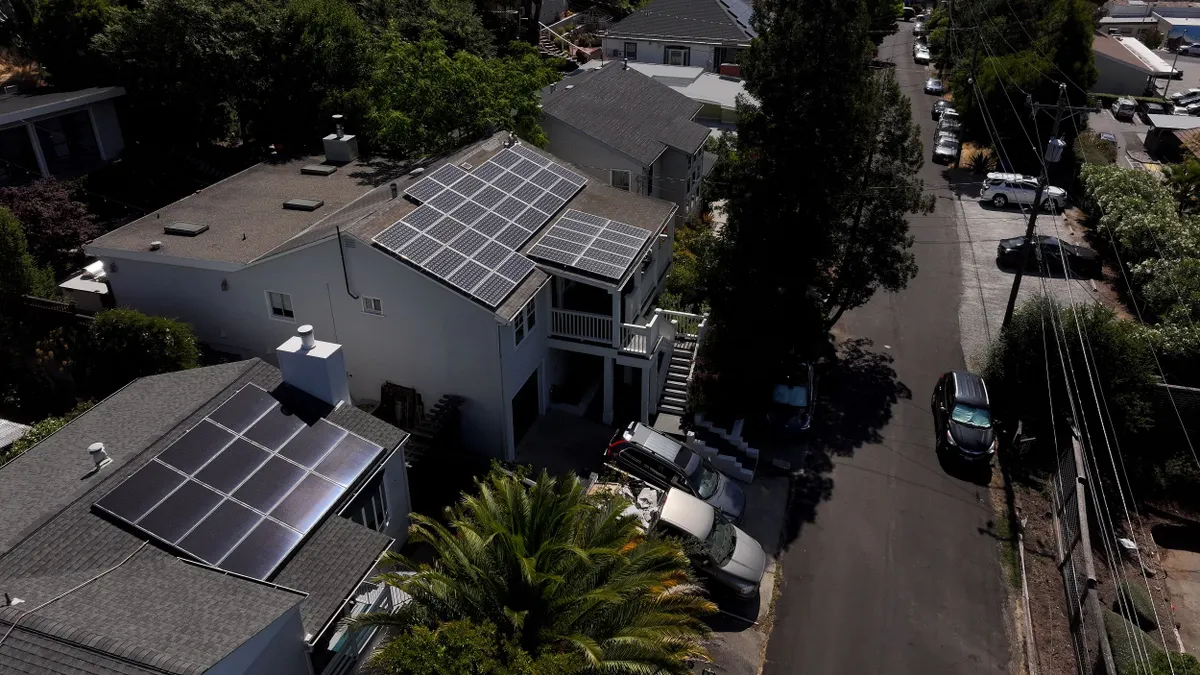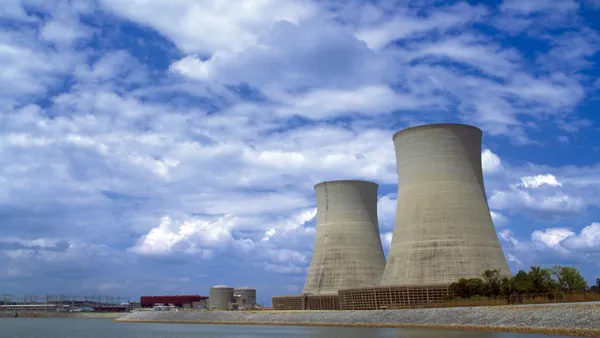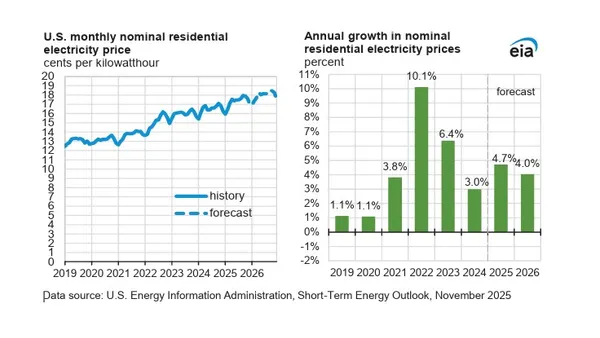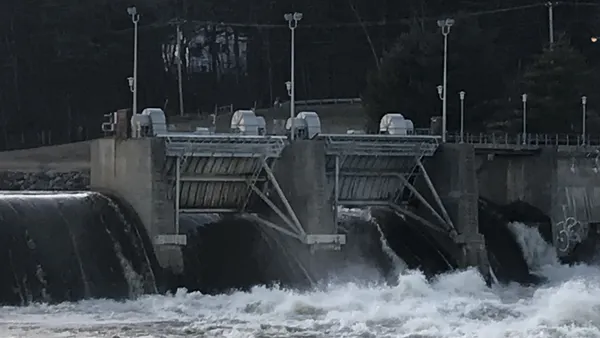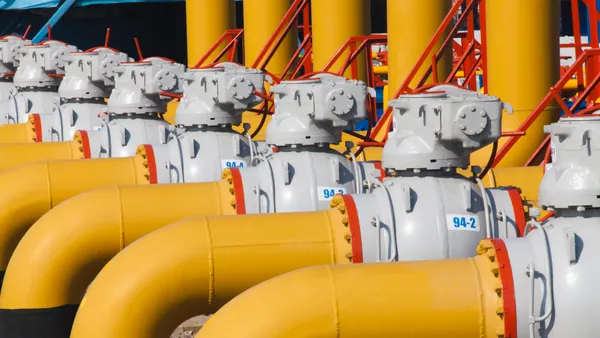Dive Brief:
- Oklo announced two partnerships last week to bring its vision of efficient, nuclear-powered data centers closer to fruition.
- It plans to co-develop advanced power and thermal management solutions with Vertiv, a provider of data center cooling systems and other digital infrastructure, and deploy Liberty Energy’s natural gas generators and electric load management platform to power Oklo’s future data center customers as federal regulators consider its advanced reactor design.
- In press statements last week, executives from the three companies said the partnerships would future-proof the next generation of high-powered computing facilities, allowing them to run more efficiently and flexibly with less impact on local grids.
Dive Insight:
Data center developers are facing fierce local opposition in many parts of the United States. Data center proposals worth at least $64 billion have been blocked or delayed by community opposition, according to the activist group Data Center Watch.
Opponents direct much of their ire to the impacts of onsite power generation and cooling systems on local environments and infrastructure.
Onsite gas or diesel generators — which run around the clock to provide “prime power” at some facilities as their owners await a grid connection — are noisy and contribute to air pollution. Power demand from grid-connected data centers may fluctuate wildly in a matter of minutes, causing potentially costly power quality issues for nearby customers and the facilities themselves. Larger data centers’ cooling systems can consume millions of gallons of water per day, which is one reason why the latest AI data center designs lean on closed water or non-water refrigerant loops for cooling.
Vertiv offers power management solutions to make “data centers good citizens on the grid,” said Martin Olsen, the company’s senior vice president of products and solutions. These solutions include uninterruptible power supply systems and larger batteries that help smooth out voltage fluctuations.
Vertiv’s partnership with Oklo could boost the efficiency of high-density computing facilities more broadly, Olsen said.
The companies say they will work together to “produce end-to-end reference designs” for heat recovery and cooling systems in data centers powered by Oklo’s small nuclear reactors, each of which generates 5% to 10% as much energy as one of the larger reactors connected to the U.S. grid today.
Those designs will closely integrate Vertiv’s thermal management technology with onsite power generation, allowing facilities to recover and use heat that would otherwise go to waste, Olsen said.
“In a nuclear power plant, about a third of the energy produces electricity and the rest is heat … normally, you dissipate that,” he said.
Vertiv’s thermal management system would recapture much of that heat and use it to run absorption chillers tied to facilities’ liquid and air cooling systems. That could significantly reduce those systems’ power consumption and cut “stranded capacity” — the power and mechanical capacity that would otherwise be needed to cool facilities at periods of peak demand — by 10% to 20%, Olsen said.
Data centers could simply bank the energy savings and use less power overall, but it’s more likely they’d run more GPUs instead, Olsen added.
It may be several years before a data center customer has the opportunity. The companies plan to demonstrate the co-designed power and thermal management solution with Oklo’s first reactor deployment at Idaho National Laboratory.
Oklo executives say that reactor could power up in late 2027 or early 2028. They have not said whether it would be colocated with a data center or other power offtaker, though the Trump administration last week identified Idaho National Laboratory as one of four U.S. Department of Energy sites it wants to host “cutting edge data center and power generation projects.”
In the meantime, Oklo’s collaboration with Liberty Energy and a previously announced partnership with RPower would deliver “bridge power” to future data center customers eager to power up before the U.S. Nuclear Regulatory Commission approves its reactor design. Both companies make small, flexible gas-fired generators that can run continuously to provide primary power to off-grid facilities or back up a grid connection and other onsite power sources as needed.
The Oklo-Liberty announcement suggested Oklo’s reactors would relegate the gas generators to a backup role over time. But, as part of the partnership, Liberty said it would provide load management solutions that enable “flexible energy services” in the short term and “future grid management services focused on optimization and resiliency.”
“This collaboration gives large-scale power users a turnkey alternative that integrates generation, backup, grid interaction, and optimization, all through a single provider,” Oklo cofounder and CEO Jacob DeWitte said in a statement.





